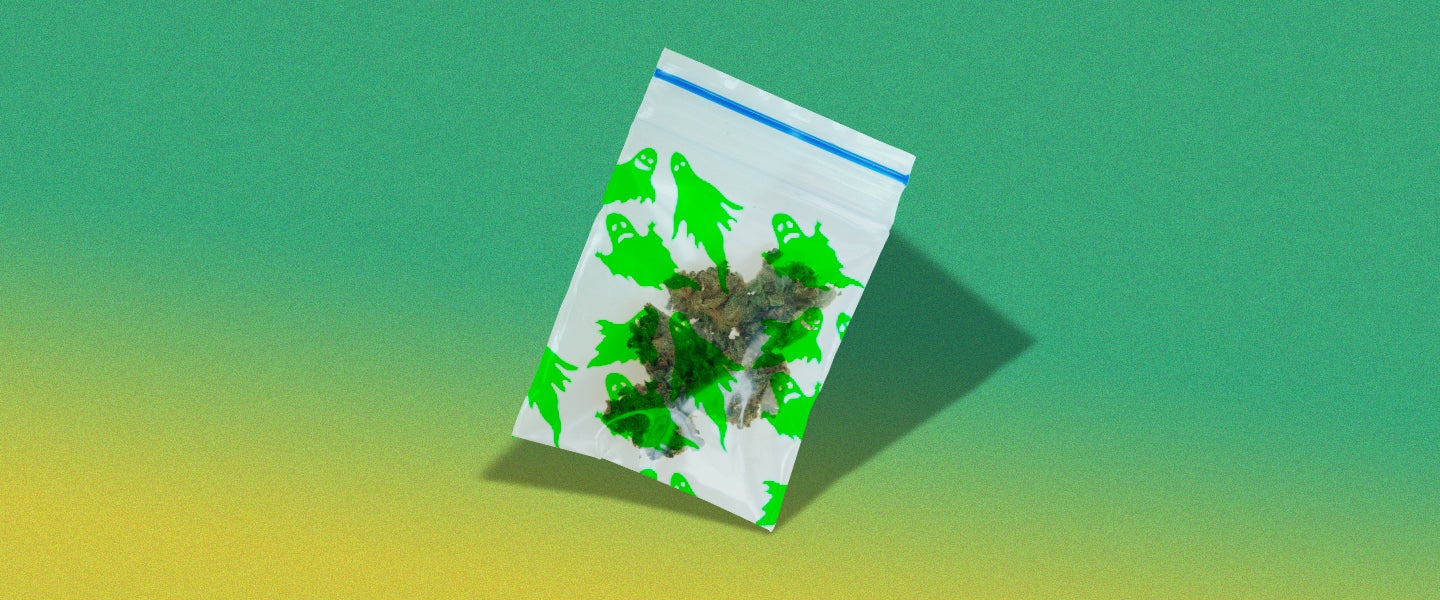Growing up in South East London, my neighborhood was so notorious for the amount of empty “weed bags” littered about — that is, the small, translucent Ziploc baggies so fragrant with marijuana that the smell constantly trails you, no matter how many layers of socks you wrap it in — that in 2013, photographer Dan Giannopoulos dedicated an entire project to documenting the vessel, recording more than 50 different kinds, each with a unique graphic printed on them. Dealers would customize theirs with things like pot leaves and yellow smiley faces both for fun, and more crucially, as a way of marking their territory and differentiating their product.
Personally speaking, I saw the baggies in every parking lot and bus stop I passed on my way to school each morning. My family’s convenience store inadvertently sold them, too (my dad swears he didn’t know what they were being used for).

And yet, walking around my neighborhood in 2020, I hardly see any such bags. Which isn’t to say that the U.K. is turning its back on drug use — far, far from it — but rather that it’s evolving.
Dan, a pseudonymous drug dealer I hung out with a year ago, makes most of his money from selling pills (MDMA and ecstasy) as well as cocaine, but like most drug dealers, he also sells weed, which he sorts into small baggies with marijuana leaves printed on them that he orders in bulk from eBay. “Part of the reason you probably don’t see baggies around much is that there are less people buying weed,” he tells me. As such, he and other dealers pay less attention to how they package weed, putting more of their resources into branding pills. “With pills, dealers can have their own mix depending on who’s supplying them,” Dan explains. “So if there’s more than one dealer selling pills in an area, it’s easy to tell the difference between high-quality shit and low-quality shit.”
On the flip side: “An eighth of weed that you spend $20 on will be similar in quality. You won’t be able to tell the difference. So many dealers throw in weed as a way of getting rid of their stock.”
Of course, how we consume weed now is totally different than when I was a kid, too. In particular, there’s a growing preference for THC oil and cannabis vape juice that’s often more potent, cheaper and more convenient to buy. “So much of buying weed is focused online today,” says Tom Usher, a writer at Vice who has covered the future of the drug culture in the U.K.
Usher tells me that while there are still drug dealers who use customized baggies, there’s not much purpose to them other than “to be funny,” especially because, if anything, they’re a detriment. “There are dealers who don’t like using marked baggies in case they’re tracked,” he says.
In other ways, however, the weed baggie isn’t dead at all. It’s just considered “packaging” now — a mix of pricier, smell-proof bags, custom jars and pocket-sized tins that are branded by the major online weed companies themselves, not the middle men selling their product. “Baggies are associated with cheap weed, and because people who still smoke want better quality, they’re going to companies and businesses that do mail-order shipping,” Usher explains.
So these days, Dan mostly uses baggies as a helpful tool to measure and sell other drugs, like cocaine. Plus, because the drug is odorless, the plastic wrap makes it easy to store and carry around. “Most of the people I sell to are city boys,” he tells me. “So I do a lot of house deliveries, and they’re taking it in their houses or at parties.”
It is, essentially, the gentrification of British drug culture — the scene now completely indoors and lorded over by giant, homogenized companies that service the wealthy and elite. Ultimately, guys like Dan may end up without any bag to hold.

